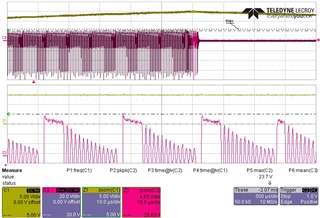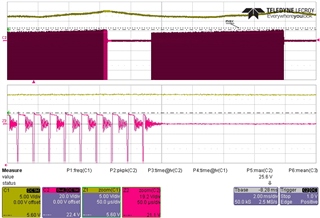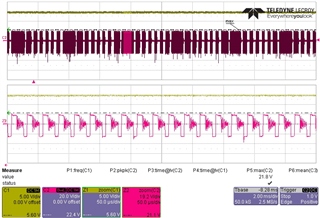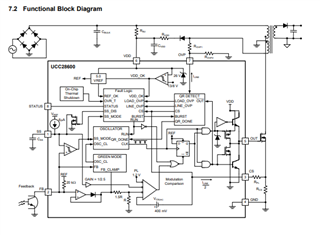Tool/software:
A design using UCC28600 to run from 85VAC to 265VAC or 400VDC I experience that at certain combinations of load and input voltage the output voltage exhibit drop and recovery within roughly 20ms (it is proven independent from the mains period as a non steady phase shift occurs between the mains input voltage and the drop/recovery pattern).
In a semistatic pattern I will see expected regulation for a few milliseconds, then roughly 2.6 milliseconds of no switching activity while the out put drop from nominal 15V to 13V when the reduced PWM starts, unable to support theactual load thus seeing further output voltage drop to approx 10V when the PWM achieves sufficient pulsewidth to reverse the voltage drop until finally normal regulation occurs, just to repeat the cycle.


















